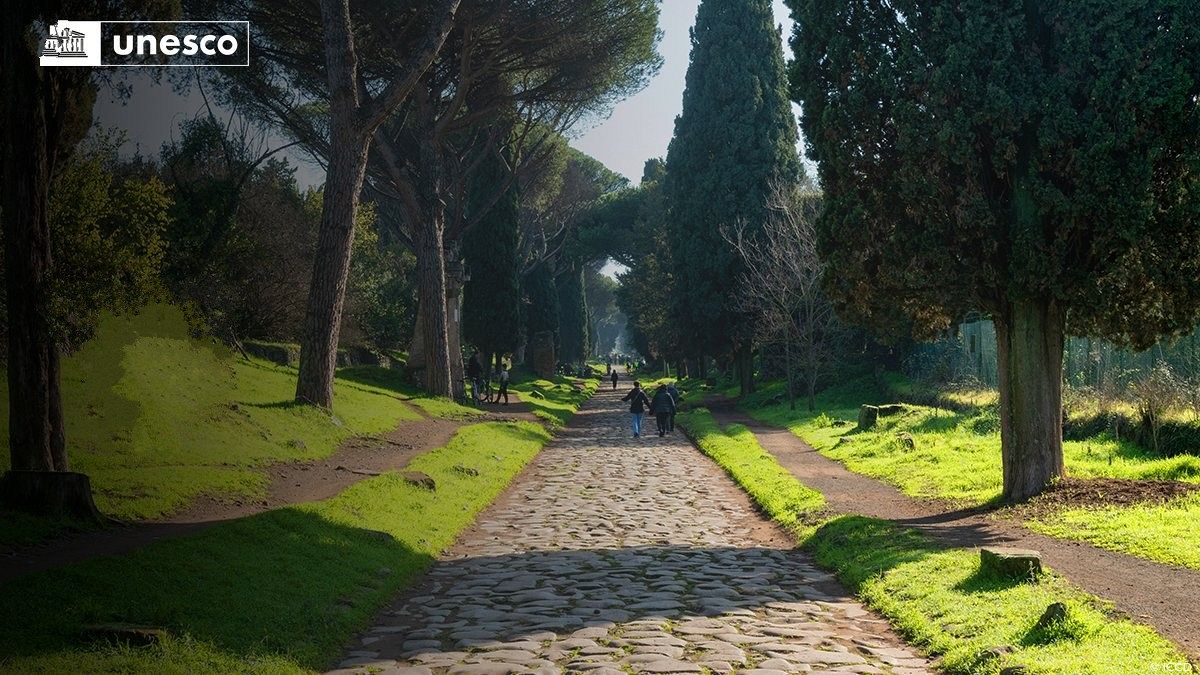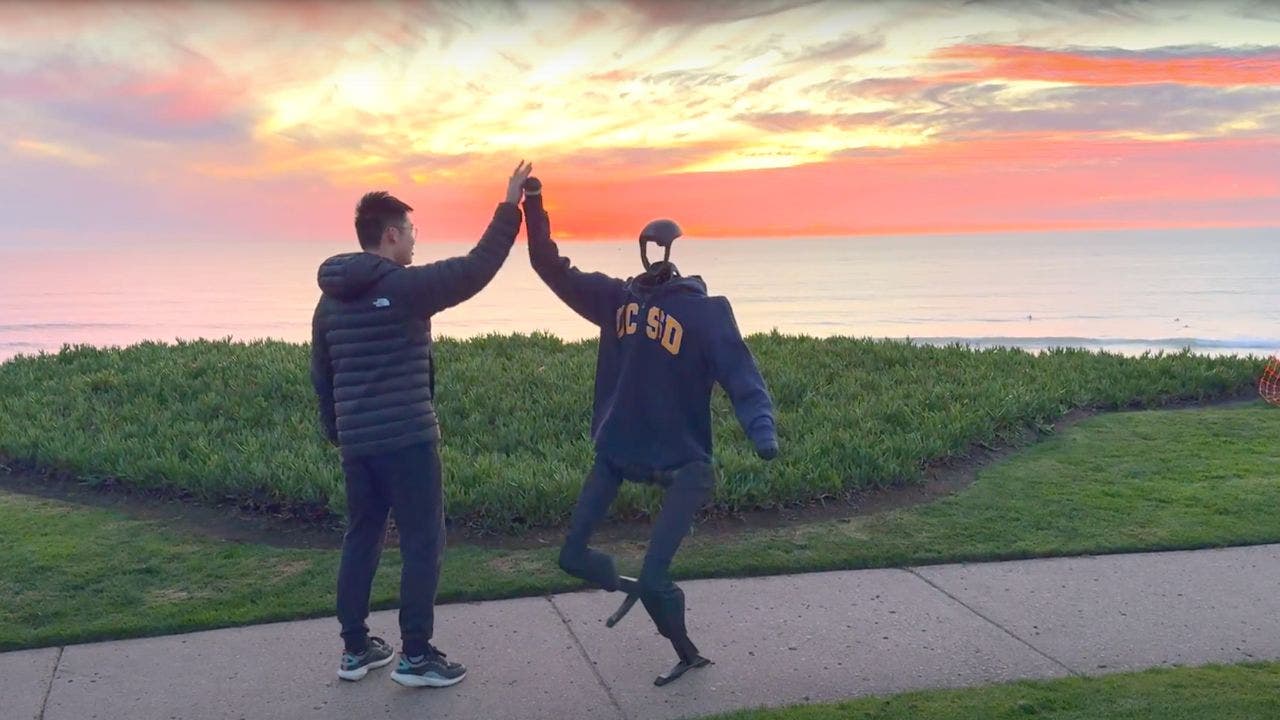San Diego, CA
Padres notes: Jake Cronenworth’s I.O.U., Joe Musgrove’s travel plans

Not lost at all in Saturday’s 3-2 win was the tag that Jake Cronenworth made to record the first out of the ninth inning.
As he’s accustomed to doing, Manny Machado’s momentum had carried him into foul territory as he fielded a ball near the third-base line. The ensuing throw to first base carried Cronenworth up the line, where he fielded the ball in time for a swiping tag of Brenton Doyle’s knee.
A replay review upheld the out call on the field.
“For those plays specifically I try not to hold the bag just in case,” Cronenworth said. “Usually I play in front of the base just in case that has to happen with a throw up the line. Thankfully I read it pretty early and got in position where I was able to pick it and (make the tag).”
Of course, more often than not, those throws are — unbelievably — on point.
Like the one in the eighth inning, when Machado made the same play look effortless, even the throw directly into Cronenworth’s chest to retire Hunter Goodman.
The Padres’ first baseman agreed with a laugh: As easy as Machado makes things for him, he owed his third baseman the acrobatic tag play in the ninth.
“He’s been in the big leagues for 11 years and making that play for 11 years,” Cronenworth said. “It seems like it’s become routine for him.”
Really an everyman
Joe Musgrove might be in the second leg of his five-year, $100 million deal, but he’s not so different the fellow San Diegans he pitches in front of:
He, too, had a Southwest flight mess with travel plans.
His late Saturday flight to San Antonio canceled, Musgrove instead traveled to Fresno on Sunday for a rehab start in low Single-A Lake Elsinore’s 5 p.m. game.
The plan was for a start in the neighborhood of three innings and 45-50 pitches and then a flight to join the Padres in Pittsburgh.
Of course, it’s not entirely on Southwest for the change in travel plans.
Musgrove could have left earlier on Saturday, but he opted to stick around to watch Martín Pérez’s debut.
“What a teammate,” Padres manager Mike Shildt said Saturday night … before he knew of the canceled flight. “He could have easily checked out early, gotten to San Antonio, and been like, you know, I’m gonna chill out. And this guy waited, waited, waited, waited till the game was over to go catch a flight so he can be with his team today. Speaks to his leadership when he’s not on the field with us.”
Notable
- RHP Michael King threw a bullpen for the first time since taking a comebacker off his left calf in his July 27 start. King is expected to return to the rotation in Pittsburgh.
Originally Published:

San Diego, CA
New marine protections could help wildlife thrive — but also squeeze San Diego fishermen

A proposal to expand one of San Diego’s 11 marine protected areas would make it the largest in the county, and could help wildlife off Point Loma thrive. But miles gained would be miles lost to some local fishermen.
Two environmental groups want to expand Cabrillo State Marine Reserve from less than half a square mile to nearly 16, extending it westward and northward to an area of Sunset Cliffs.
The reason? Kelp, long a chief concern of scientists, fishermen and other ocean-goers.
Like underwater rainforests, kelp forests support hundreds of species that live within and above them and depend on their oxygen. They’re needed for a healthy, biodiverse ecosystem and are believed to help mitigate climate change, but they have been vanishing along the California coast.
Scientists aren’t sure of the precise reasons they’re disappearing, and the trends vary along the coast. Climate change is believed to be a factor — kelp flourishes in cooler water. The loss of predator species can throw the kelp forests’ ecosystems out of balance, and threaten its survival. And pollution can act as fertilizer and feed algae, which then sucks up oxygen and blocks the light kelp needs to grow.
Marine protected areas were established over 10 years ago as an effort to preserve ocean ecosystems and revive waters exhausted from overfishing. A patchwork of them now protect 16 percent of California’s coastal waters.

Today, fish in the protected areas are larger and more plentiful, and kelp is more resilient and healthier, a state review of the marine protected areas’ first decade found early last year, echoing findings by other researchers.
But that review also asked for public input on whether more protections were needed, or if anything needed to be changed. California’s networks of protected areas are young, and there’s still a lot to be determined, said Kara Gonzales, a state environmental scientist. “There’s room for things to change,” she said.
Twenty petitions for adjustments to protected areas statewide were submitted in response, among them the one for Cabrillo. The state has just begun discussing them and will continue this month.
Some local fishermen question whether there’s a need for the protections at all, much less expanded ones.
Peter Halmay has been diving since the 1970s and leads a local group that advocates for commercial fishermen. He sells regularly to a few restaurants and every Saturday at the Tuna Harbor Dockside Market, which he helped start a decade ago.

If the nearby waters closed, he says he’d have to head further out to sea, ultimately causing more pollution. “If you harvest close by, you do some good,” he said.
Halmay has 20,000 dives under his belt, and over the decades, he’s seen the underwater ecosystem shift from struggling to flourishing and back again — changes he suggests may be due in part to natural cycles.
As a diver, “I am the miner’s canary,” spotting changes on the seafloor “way before anybody sees,” he says.
He’s skeptical that marine protections make much difference, or will yield a “perfect balance of nature.” “Nature is very messy,” he adds.
‘One of the best tools’
To environmental advocates, the state review’s findings on the protected areas’ successes is a key reason to expand them. They say that could help the state meet its goal, set by the governor in 2020, of conserving 30 percent of the state’s land and coastal waters by 2030 — part of a global movement known as 30×30.
Environmental California asked scientists from all over what they believe are the greatest threats to coastal waters and marine life, said Laura Deehan, the group’s state director. Time and time again, she said, the response was the dwindling of kelp forests.

Nur Arafeh-Dalmau, a postdoctoral researcher at Hopkins Marine Station at Stanford University, has been studying kelp forests off Southern California and Baja California for five years.
Relying on decades worth of satellite imagery of canopy-forming kelp, his research, along with other scientists, has identified where kelp has remained constant, despite climate change and other human impacts — findings that helped inform the environmental groups’ recommendations for where to expand protections.
Just 8.4 percent of the persistent giant kelp off the Southern California coast was protected, Arafeh-Dalmau and other scientists found in a study published in 2021.
“We recommended that we need higher levels of this highly persistent kelp, because they have many attributes that are important for the ecosystem,” he said.
Arafeh-Dalmau’s research looks at exploring and understanding the ecosystem as a whole, not just a single species. He’s found that inside Southern California’s marine protected areas, kelp has survived more because there has been an intact food web.
When an area is overfished, key predators like sheepshead and spiny lobster can be decimated — and in their absence, populations of species like purple sea urchins explode, devouring the kelp and sometimes leaving an area barren, he said.
That’s been happening off the coast of Baja California. Something similar has been happening off northern California, where disease afflicting another key predator, the sea star, has allowed purple urchin populations to deplete the kelp. Marine protections can help it and those predator species recover.

“We know marine protected areas are working,” Deehan said. “And so this is one of the best tools we have as the growing threat from climate impacts and more pollution are affecting our coastline.”
At the edge of Point Loma, visitors to Cabrillo National Monument traverse the rocky ledges to scout tidepools for barnacles, hermit crabs, anemones, brittle stars and even the occasional octopus. The pools are a part of a state marine reserve — there’s no fishing, and nothing natural can be taken out of the area.
But further just offshore, a healthy canopy of kelp filled with calico bass, sheepshead, and other fish and invertebrates for now remains one of San Diego’s last healthy and fishable large kelp beds — and is now being considered for protection.
‘A good life’
Urchin divers, lobstermen, crabbers and sport fishermen say they depend on such places to stay afloat, and they aren’t sold on the benefits of such protections.

Dave Rudie and Shad Catarius tow a boat and pull up behind the Morena-area seafood market and wholesaler Catalina Offshore Products to unload about 400 pounds of red sea urchins they harvested that July afternoon off Point Loma.
Rudie grabs a blood-red creature, its spines wiggling, and cracks it open, exposing the five teeth that munch on the sequoias of the sea. He pulls a creamy orange sponge-like sliver from the center — uni — and gulps it down.
“Doesn’t get fresher than that,” he says.
In 1974, while studying marine biology, Rudie read in the Los Angeles Times that people were buying the animals for $0.07 a pound and sensed a business opportunity. He’s been harvesting them ever since.
“It’s created an industry that produces jobs and food, and it’s been a good life for me,” he says.
More than a decade ago, Rudie was part of a state task force that let commercial fishermen weigh in on initial marine protections. Today, he believes there’s no need to expand them.

If Cabrillo grows as proposed, he and Catarius would lose their primary hunting location. “We would be losing a seafood supply that supplies local consumers and restaurants,” he says.
Rudie has just returned a few days earlier from helping with a kelp restoration project in Northern California, harvesting purple sea urchins as scientists grow kelp on structures.
Southern California’s waters face nothing like the urchin issues further north. But here, Rudie says he helps maintain local urchin populations by harvesting and selling them to sushi bars and other restaurants, as he has for nearly half a century. “Sea urchin divers have taken the role of other predators that are no longer present,” he says.
Fred Huber operates sportfishing boats including the Daily Double. “We kind of compete with SeaWorld and the zoo for the tourist dollar,” he says one morning, on a pit stop at a local bait shop.
He says his business has already been squeezed by other regulatory changes — higher fishing-license fees, a higher minimum wage, rules requiring cleaner boat engines — and that expanding the protected area would cut his fishing options in half.

After passing naval ships and submarines, his crew drops anchor about a half mile off the Cabrillo MPA, just off a kelp bed. A deckhand smoking a cigarette tosses scoops of live bait into the water, as seagulls squawk and swoop down to steal a snack as fish swarm to the chum. Within minutes several fish are caught.
“Do we dislodge some kelp occasionally? Absolutely,” he says — but he argues the damage is roughly akin to driving a truck through a field. “There are things that are more extreme, more impactful, than us just being here.”
As his boat heads back to shore, his passengers spot a seagull with its beak stuck in a small plastic cup — detritus from some unknown human source. He baits it with a handful of fish, then snatches it in a fishing net and slices the cup off with a knife to set it free.
“This idea that we need to close off a certain percentage of the coastline and protect a certain percentage of the coastline — I don’t understand what they’re trying to achieve,” he says. “When you do that, you don’t lessen the pressure that’s being put on the ocean.”
What’s next
The California Fish and Game Commission will ultimately decide on any Cabrillo expansion, along with 19 petitions for other changes to California marine protected areas, including several off San Diego County. It meets this month to begin considering them.

Of all those petitions, three would affect five local MPAs — but none as dramatically as the proposal for Cabrillo. The others could change the boundaries of Swami’s State Marine Conservation Area, as well as allow commercial sea urchin harvesting and classification changes for Famosa Slough, San Elijo Lagoon and Batiquitos Lagoon.
Already, the state Department of Fish and Wildlife has reviewed the petitions and given the commission recommendations. The commission, which creates the regulations the agency enforces, has begun sorting them by priority — with the less controversial proposals set for discussion first.
“Our job is to really consider these petitions through the lens of multiyear goals,” said Samantha Murray, a commissioner and executive director of a master’s program at Scripps Institution of Oceanography. “The science and, of course, the needs of local communities as well, along with things like climate resilience, social justice and tribal stewardship.”
No decisions have yet been made, and public input is still being sought, the commission says. Discussion on more controversial petitions will likely happen in the fall.
The commission next meets Aug. 14 and 15. The public can attend meetings in person or on Zoom and can email beforehand. Details are available at fgc.ca.gov/Meetings/2024.

Originally Published:
San Diego, CA
Pérez stars in debut, helping Friars snap trouble vs. Rox

The win snapped a five-game losing streak to the Rockies as San Diego got going after Gordon was lifted following six sensational
San Diego, CA
Encinitas Rotary Club highlights past year’s accomplishments at ‘changing of the guard’ meeting

At a recent Encinitas “Animal House” Rotary Club “changing of the guard” meeting, outgoing president Dr. Kent Pollock recapped the highlights of the past year, according to a news release. In trying to name his personal favorite, Pollock said in the news release, “It’s really hard to choose the accomplishment that stood out. I fully enjoyed all of it. Bikes to orphanages in Mexico, raising money for Ronald McDonald House, and all of the community service that we did almost weekly. Working together with other community service groups like Community Resource Center Encinitas and the Rancho Coastal Humane Society. Building positive relationships with so many service-oriented people and working together to make our town and world a better place. My experience in Rotary, and particularly as president, has been life changing.”
Pollock, an Encinitas resident, is also a chiropractor and owner of North County Chiropractic on 2nd Street in Encinitas.
Courtesy of Josie Colvin
President-elect Mark Berning hands the Rotary Bell to incoming 2024-2025 Encinitas Rotary Club president Daphne Fletcher.
The club proceeded to “demote” Pollock, who, along with Mark Berning, the new president-elect, passed the “Liberty Bell” to incoming club president Daphne Fletcher. Encinitas Rotary’s 85th president, and fifth woman president, Fletcher is the CEO of Ledge Media and HPN Books, which publishes history books all over the country, including “Encinitas: Our History and People and Tribute to San Diego County Fire Departments.”
In 2022, while serving as the club’s International Board Chair, Fletcher spearheaded the largest fundraiser in the club’s history: a Rotary International Global Grant that raised $250,000 for maternal health care in Uganda and was a joint effort between more than 15 Rotary Club chapters worldwide. Fletcher was inspired to organize the fundraiser after hearing the story of one of the club’s guest speakers, Jolly Okot, a Nobel Peace nominee who works to educate and empower women in Northern Uganda after surviving the civil war. That same year, Fletcher also headed up a fundraiser that raised nearly $50,000 towards humanitarian efforts for those impacted by the conflict in Ukraine. For these initiatives, Fletcher was honored with the Encinitas Rotary Club’s Humanitarian Service Award.
President-elect Mark Berning, who is also on the board of directors of the San Dieguito Heritage Ranch Museum, is the founder and organizer of the Heritage Ranch Haunted Ghost Town, a big annual fundraiser, was awarded the Encinitas Rotary Club Rotarian of the Year a few years ago for his community service efforts.
Courtesy of Josie Colvin
Outgoing Encinitas “Animal House” Rotary Club President Dr. Kent Pollock receives a ceremonial gavel plaque at the “demotion” party.
Rotarian Paul Dwork was also recognized for his key role in organizing Merlin’s Magic this past year. The local event, hosted by Dwork AKA Merlin the Magician, features renowned magicians from across the U.S. who regularly perform at Los Angeles’ Magic Castle and other major venues. As with its inaugural show in 2023, which attracted more than 400 attendees and raised over $20,000 for charity and scholarships, this year’s event sold out, prompting discussion about adding a matinee show next year.
Rotary International celebrates its 120th anniversary in February 2025. The Encinitas Rotary Club, founded in 1939, fosters lifelong friendships and drives social impact through numerous local, regional, and international causes. Local efforts include an annual Encinitas Wine Festival that raises nearly $100,000 each year for area charities, a program called Home Team that aids seniors with household repairs, and the preservation of historic landmarks and environmental cleanups, such as those held at Cottonwood Creek and area beaches, and $10,000 towards student scholarships at SDA.
Regionally, the Encinitas Rotary builds a house in Mexico every year through Project Mercy, and internationally, in addition to the Uganda and Ukraine projects mentioned above, $10,000 was raised to light up via solar panels an entire village in El Nido, Philippines, to help school children study at night.
The Encinitas Rotary Club holds meetings every Wednesday at noon at the Encinitas Elks Lodge, 1393 Windsor Road. The club invites newcomers to enjoy a delicious buffet-style lunch, inspiring guest speakers, and camaraderie. Learn more at EncinitasRotary.org. –-Encinitas Rotary news release
Originally Published:
-

 Mississippi5 days ago
Mississippi5 days agoMSU, Mississippi Academy of Sciences host summer symposium, USDA’s Tucker honored with Presidential Award
-

 Politics1 week ago
Politics1 week agoRepublicans say Schumer must act on voter proof of citizenship bill if Democrat 'really cares about democracy'
-

 Politics1 week ago
Politics1 week agoTrump announces to crowd he 'just took off the last bandage' at faith event after assassination attempt
-
World7 days ago
More right wing with fewer women – a new Parliament compendium
-

 World1 week ago
World1 week agoIsrael says Hezbollah crossed ‘red line’, strikes deep inside Lebanon
-

 Politics1 week ago
Politics1 week agoHarris failed to combat ‘root causes’ of illegal immigration, former Border Patrol union chief says
-

 News1 week ago
News1 week agoVideo: Kamala Harris May Bring Out Trump’s Harshest Instincts
-

 World1 week ago
World1 week agoItaly's Via Appia enters the Unesco World Heritage List















